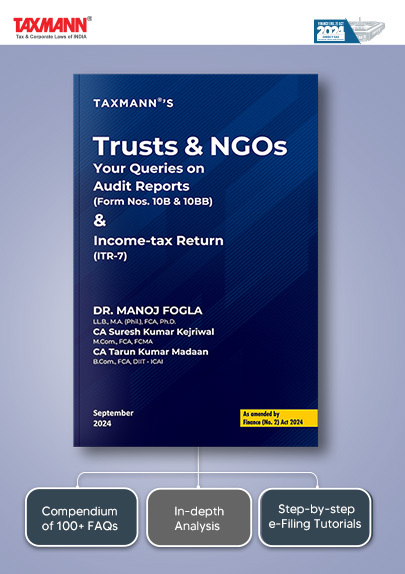ITAT: No Benefit Under Rule 6DD for Assessee Not Primarily Responsible for Cash Payments
- Blog|News|Income Tax|
- 2 Min Read
- By Taxmann
- |
- Last Updated on 15 May, 2023
Case Details: R.K. Powergen (P.) Ltd. v. ACIT - [2023] 149 taxmann.com 447 (Chennai - Trib.)
Judiciary and Counsel Details
-
- V. Durga Rao, Judicial Member and Manjunatha G., Accountant Member
- V. Ravichandran, CA for the Appellant. M. Rajan, CIT for the Respondent.
Facts of the Case
A search operation was conducted on the business premises of the assessee. During the course of search, loose sheets and books were seized. The case was taken up for scrutiny, and during the course of assessment proceedings, it was noticed that the assessee made cash payment in excess of Rs. 20,000/- in violation of provisions of section 40A(3).
In response, the assessee explained that there was an urgent requirement for cash payments to transporters of bio-mass waste as the assessee was procuring bio-mass waste from local persons. Not satisfied with the explanation provided by the assessee, the Assessing Officer (AO) made additions to the income of the assessee under section 40A(3).
On appeal, CIT(A) upheld the additions made by AO, considering that the payments were also not covered under rule 6DD. Aggrieved by the order, an appeal was made to the Chennai Tribunal.
ITAT Held
The Tribunal held that the responsibility to make payments to transporters was on the suppliers. In fact, the assessee had also made payments to transporters but debited to the supplier’s account. It is very clear that primary responsibility to make payments to transporters wasn’t on the assessee but on supplier.
Further, there was no dispute with regard to the fact that sum paid by the assessee in a single day to one person was in excess of prescribed limit provided in section 40A(3). Also, the assessee could not make out a case that the cash payment made was covered under any exception as provided under rule 6DD of Income-tax Rules, 1962.
Concerning the transport charges allowed in earlier years, the assessee paid cash towards transportation costs, such as fuel expenses, driver expenses, etc., which were to be settled then and there in cash.
Therefore, the assessee cannot claim that there was an urgent requirement to make payment in cash considering business exigency, and there was no error in the reasons given by the AO to disallow cash payment in excess of the prescribed limit under section 40A(3).
List of Cases Referred to
-
- Dy. CIT v. R.K. Powergen (P.) Ltd. [IT Appeal Nos. 1864 to 1867 (Mad.) of 2018] (para 4).
Disclaimer: The content/information published on the website is only for general information of the user and shall not be construed as legal advice. While the Taxmann has exercised reasonable efforts to ensure the veracity of information/content published, Taxmann shall be under no liability in any manner whatsoever for incorrect information, if any.

Taxmann Publications has a dedicated in-house Research & Editorial Team. This team consists of a team of Chartered Accountants, Company Secretaries, and Lawyers. This team works under the guidance and supervision of editor-in-chief Mr Rakesh Bhargava.
The Research and Editorial Team is responsible for developing reliable and accurate content for the readers. The team follows the six-sigma approach to achieve the benchmark of zero error in its publications and research platforms. The team ensures that the following publication guidelines are thoroughly followed while developing the content:
- The statutory material is obtained only from the authorized and reliable sources
- All the latest developments in the judicial and legislative fields are covered
- Prepare the analytical write-ups on current, controversial, and important issues to help the readers to understand the concept and its implications
- Every content published by Taxmann is complete, accurate and lucid
- All evidence-based statements are supported with proper reference to Section, Circular No., Notification No. or citations
- The golden rules of grammar, style and consistency are thoroughly followed
- Font and size that’s easy to read and remain consistent across all imprint and digital publications are applied






 CA | CS | CMA
CA | CS | CMA


